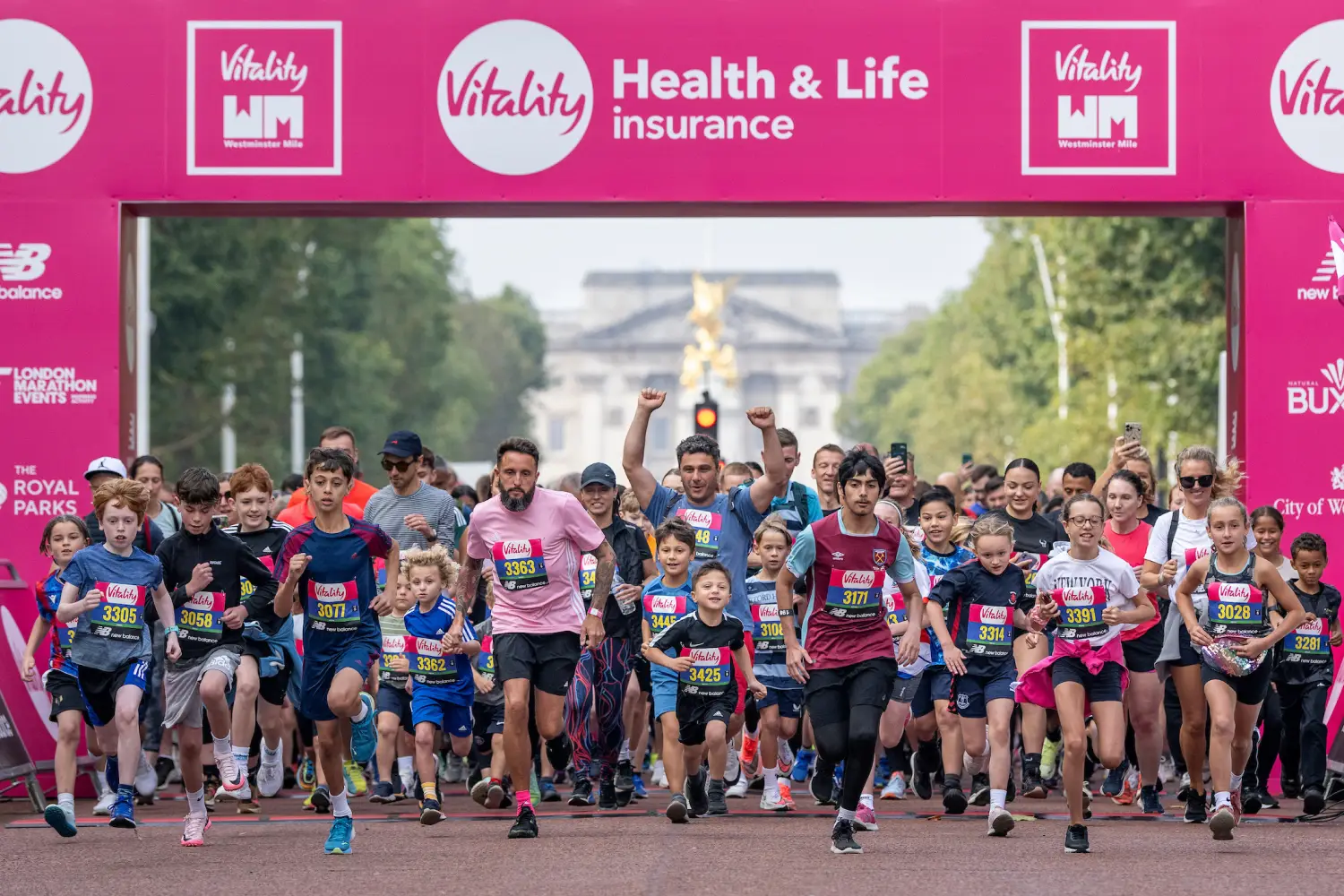You’ve completed your training runs, your fitness has improved significantly, and your next personal record is just around the corner. Although some factors, like weather conditions (wind, rain, etc.), are beyond your control, your pacing strategy remains entirely up to you. With an effective pacing approach, you can optimize your performance and ensure a strong finish in your half marathon.
How you start the race often dictates how well you’ll finish. Lining up in the right corral and sticking to your plan are critical. Many runners aim for a negative split—running the second half faster than the first—which is a proven method for achieving personal bests. Below are pacing strategies and practical tips for runners of all levels.
1. Run Your Own Pace, Not Someone Else’s
At the start line, you’ll be surrounded by many runners, each with their own goal. It’s tempting to match your pace to others around you, but doing so can derail your race. Following someone running significantly faster than your target pace can tire you prematurely, while trailing someone slower can keep you from hitting your goal. Stay disciplined by consistently checking your pace and running your own race.
2. Start Slightly Slower for the First 3 Miles
A controlled start helps conserve energy. A good rule of thumb is to run the first 3 miles at about 5–10 seconds per mile slower than your goal pace. This gradual build-up allows your body to warm up, keeps lactic acid from spiking too early, and prevents you from burning out in the second half of the race.
3. Maintain Target Pace from Miles 4–11
Once you’ve settled into your rhythm, focus on hitting your target pace consistently. This is the “engine room” of your half marathon. At this stage, you’ll likely pass runners who went out too fast, which can boost your confidence. Stay relaxed but alert—any wasted energy here can cost you in the final stretch.
4. Push Harder for the Final 2 Miles
From mile 11 onward, it’s time to dig deep. Gradually increase your effort, aiming for a strong finish. Even if your legs feel heavy, mental toughness plays a key role here. Use the crowd, the atmosphere, and the sight of the finish line as motivation for a final push. A fast closing mile can shave valuable seconds off your time.
Half Marathon Pacing Strategies by Experience Level
Beginner Strategy
First-time half marathoners should prioritize finishing strong rather than chasing an aggressive time. A simple approach is to run the first half of the race conservatively and only pick up the pace if you feel good at mile 8 or 9. Walk breaks through aid stations for hydration are perfectly fine. The main goal is to avoid “hitting the wall” too early and to enjoy the race experience.
Intermediate Strategy
If you’ve run a few half marathons, you can aim for even splits (running each mile at roughly the same pace). This requires discipline, especially in the first 5K, but it’s a reliable way to hit your goal time. Use your training data to set a realistic target—typically based on long run paces or a recent 10K race result.
Advanced Strategy
Experienced runners often aim for a negative split: running the first half slightly slower and the second half faster. This strategy requires patience early on and strong endurance in the later miles. Advanced athletes may also pace by heart rate or lactate threshold, staying just below their anaerobic limit until the final push. Done correctly, this approach maximizes performance and minimizes the risk of blowing up.
Half Marathon Pacing Chart
Use the chart below to estimate your average pace per mile and per kilometer for common goal finish times. Adjust based on your training fitness and race conditions.
| Goal Time | Pace per Mile | Pace per Km |
|---|---|---|
| 1:30 | 6:52 | 4:16 |
| 1:45 | 8:00 | 4:58 |
| 2:00 | 9:09 | 5:41 |
| 2:15 | 10:18 | 6:24 |
| 2:30 | 11:27 | 7:07 |
Race-Day Tips to Support Your Pacing
- Hydration: Drink small amounts regularly. Don’t wait until you’re thirsty.
- Nutrition: Take gels or chews every 30–45 minutes, depending on your stomach tolerance.
- Warm-up: A light jog and dynamic stretches help prepare your muscles for race pace.
- Mental strategy: Break the race into segments (5K, 10K, final stretch) instead of thinking about 13.1 miles all at once.
Common Pacing Mistakes to Avoid
1) Starting Too Fast
Adrenaline and a crowded start corral can make the first mile your fastest — and that’s a problem. Spiking your heart rate early burns glycogen you’ll need after mile 10. Instead, aim for the first 3 miles at ~5–10 sec/mile slower than goal pace, then settle in. Use your watch’s lap pace, not current pace, to smooth GPS noise. If you feel “too easy” in mile 1, that’s a good sign.
2) Ignoring Course Profile and Weather
Holding a rigid pace on hills, turns, or in headwinds can backfire. Effort should stay consistent, not speed. On climbs, expect pace to slow; on descents, let gravity help while keeping form controlled. In heat or wind, adjust goal pace by a few seconds per mile and focus on heart rate or perceived exertion. Smart adjustments protect your finish time more than forcing splits that aren’t realistic on the day.
3) Skipping Fuel or Hydration
Waiting until you feel thirsty or depleted is too late. For most runners, a gel every 30–45 minutes and small sips at each aid station (every 2–3 miles) keeps energy steady. Practice this in long runs so your stomach knows the routine. If aid stations are crowded, grab-and-go: squeeze half a cup, don’t chug. Consistent fueling supports even pacing and a stronger final 5K.
4) Not Practicing Race Pace in Training
Race day shouldn’t be the first time you feel your target pace. Include workouts like 2×3 miles or 3×2 miles at goal pace with 3–4 minutes easy between, plus long runs that finish with 3–4 miles at race effort. This builds economy and confidence, making your target pace feel familiar rather than forced. If goal pace never feels sustainable in training, revise the goal before race day.
5) Staring at the Watch (or Never Looking)
Both extremes hurt pacing. Constant clock-gazing can cause panic and micro-surges; never checking leads to unintentional slowdowns. Use structured checks: glance at lap pace in the first 3 miles, then at each mile beep from miles 4–11. In the final stretch, switch to effort and form cues (relaxed shoulders, quick cadence). Let the watch guide — not dictate — your race.
6) Waiting Too Long to Compete
Some runners stay “comfortable” until the finish chute, missing minutes they could have gained. Plan a controlled surge after mile 10–11: lift cadence slightly, shorten stride on rollers, and pick a runner ahead to reel in. This intentional gear change turns a steady race into a strong negative split and keeps you mentally engaged when it matters most.
Frequently Asked Questions
What is the best pacing strategy for a half marathon?
Most runners perform best with either even splits or a slight negative split. Going out too fast almost always leads to slowing down in the second half. A controlled first 5K followed by steady pacing is the safest approach for both beginners and experienced athletes.
Should I run the first mile faster?
No—starting too fast is one of the most common mistakes in half marathons. Your body needs time to warm up, and an aggressive first mile can cause early fatigue. Instead, aim for a slightly slower start, then ease into your goal pace by mile 3.
How do I pace my first half marathon?
If it’s your first half marathon, focus on finishing comfortably. Run the first half conservatively, take hydration breaks, and only speed up if you feel strong after mile 8. Setting a goal time is optional for beginners—it’s better to enjoy the experience and learn how your body reacts to the distance.
Does trail or hill training help half marathon pacing?
Yes, trail and hill running build leg strength, aerobic capacity, and mental toughness. These adaptations make maintaining pace in a half marathon easier, especially on rolling courses. Many runners include weekly hill repeats or trail sessions in their training plans as a form of natural resistance training.
Final thoughts: Having a clear pacing strategy makes the half marathon more controlled and enjoyable. Whether you’re running your first 13.1 miles or chasing a personal best, smart pacing—combined with proper hydration and nutrition—will set you up for success. Plan your race, run with patience, and finish strong.



